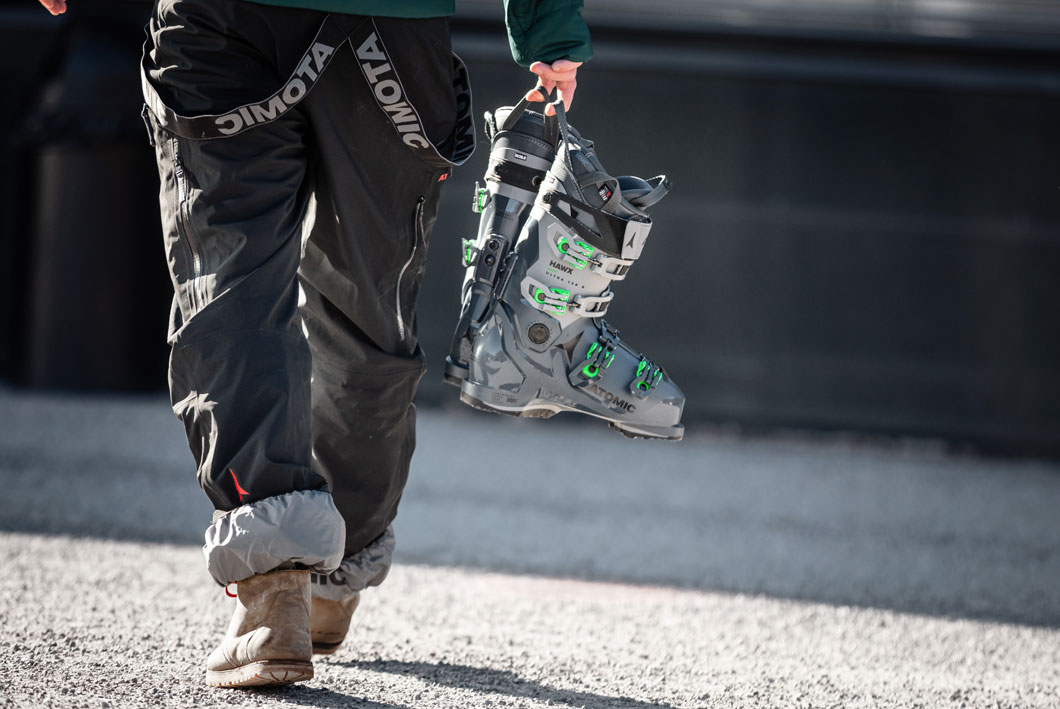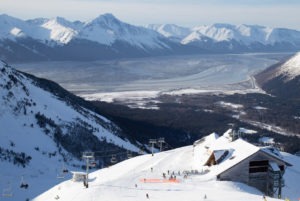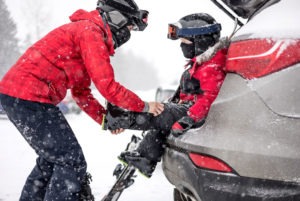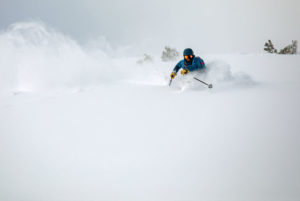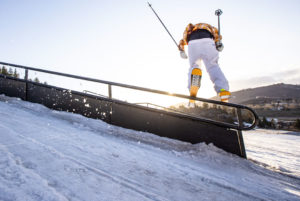Ski boot flex is a fairly self-explanatory term: it describes how flexible or soft a ski boot is, how much give it has, how much it bends, how much resistance you’ll encounter, etc. If you’re shopping for a pair of ski boots, ski boot flex is a term you’ll likely come across while browsing or doing your research to pick out a pair that’s best for you.
How do I know what ski boot flex is right for me?
When you’re looking for a pair of ski boots, whether you’re upgrading from your old ones or you’re buying your first pair, you’ll need to know a few things to determine the ski boot flex you need.
First, you’ll want to consider what level of skiing you’re at. Are you a beginner, intermediate, advanced, or expert skier?
Next, you’ll want to think about what style of skiing you do. Do you prefer to ski easy runs to cruise and carve or are you always looking for more challenging terrain, like moguls, riding in the park, going off jumps, and more?
Another factor is your body type. Someone who is smaller will likely need a somewhat softer boot than someone larger. This is why men’s and women’s ski boots have a different flex chart with different ratings.
Ski Boot Flex Rating
What is a ski boot flex rating? A boot’s flex rating will usually be on a scale of 50 to 130. The lower the number, the softer and more flexible the boot will feel, whereas the higher the number, the stiffer the boot will be. Keep in mind that this may vary slightly from brand to brand because there is not an industry standard for ski boot flex.
A boot that’s a 70 from one brand may feel stiffer or softer than one that’s a 70 from another brand. This is why it’s always important to try on boots in person when you can.
Here are the different flex boot charts for both men’s and women’s ski boots.
Men’s Ski Boot Flex Chart
| Ability Level | Beginner /
Intermediate |
Intermediate /
Advanced |
Advanced /
Expert |
Expert /
Race |
| Feel | Soft | Less Soft | Stiff | Very Stiff |
| Flex Rating | 60-80 | 80-100 | 110-125 | 130+ |
Women’s Ski Boot Flex Chart
| Ability Level | Beginner /
Intermediate |
Intermediate /
Advanced |
Advanced /
Expert |
Expert /
Race |
| Feel | Soft | Less Soft | Stiff | Very Stiff |
| Flex Rating | 50-70 | 70-90 | 90-100 | 105+ |
While everyone is different in terms of size, experience, and skiing preferences, here are a few general ideas of when you will want a softer boot as well as when you will want a stiffer boot.
You will want a softer ski boot if…
- You are a beginner with little skiing experience. This is because soft boots will be more forgiving and help you feel more in control of your movements while you’re on the slopes.
- You stick to blue and green runs. Softer boots are also great for more “leisurely” or “relaxed” skiing, since they don’t provide the responsiveness needed to ski fast. If you prefer skiing at slower speeds and taking things easy, a softer boot will be best for you.
- You have a smaller build. While experience and ski style affect the type of boot that is best for you, you also can’t ignore your size and build. If you’re on the smaller side, a softer boot flex may work better for you overall.
- You ride primarily in the park. While park skiers do need a decent amount of support while skiing, they also need to have enough give to move with their skis and have enough flexibility in their boots to land comfortably.
You will want a stiffer boot if…
- You are an advanced skier and want to ski fast. Stiffer boots allow you to be more precise with your skiing and give you the power to speed up easily. This is what makes them ideal for advanced skiers or those who are more experienced.
- You ski more difficult runs and terrain. If you’re able to ski black runs and like exploring new terrain such as backcountry, moguls, and steeper hills, stiff boot flex will help you out by providing you more control and response.
- You have a larger build. Finally, boots with a stiffer flex can be a good option for those who are taller or heavier. However, you won’t know what feels best for you until you’re able to try boots on for yourself.
There are other factors that play a role in ski boot flex, as well, such as the buckles, strap, and the stiffness of the liner. Additionally, temperature can play a role in affecting a ski boot’s flex. Cold weather can make the plastics a bit stiffer, so keep this in mind when you’re trying on boots in the store. Last of all, age and usage will affect ski boot flex as well since the plastic will get worn out and become softer over time.
Are you looking for a new pair of boots this ski season? Stop by our ski shop for all your essentials, and browse our selection from top brands such as Atomic, Head, Rossignol, Salomon, and more!
